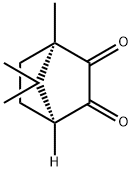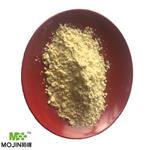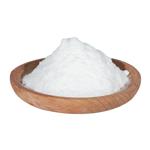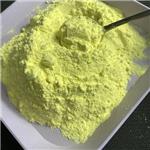Uses
(1R)-(-)Camphorquinone are used as visible light photoinitiator for biomedical applications such as in dental surgery.
Uses
(1R)-(-)Camphorquinone are used as visible light photoinitiator for biomedical applications such as in dental surgery.
Uses
(1
R)-(-)-Camphorquinone may be used as an analytical standard for the determination of the analyte in dental resin composite restorations in the oral environment in contact with food and beverages, and biological samples by analytical techniques.
Uses
(1
R)-(?)-Camphorquinone can be used as a chiral starting material for the preparation of:
- α-Hydroxycamphors by selective reduction of keto groups using various vegetables.
- Camphor-1,2-diamine platinum(II) complexes for DNA interaction studies.
- Camphoric anhydride by unsensitized photo-oxidation in the presence of oxygen and polar solvents.
- Camphorquinone-based chiral homoallylic amine, which is reacted with aldehydes to produce homoallylic primary amines via imine formation followed by 2-azonia-Cope rearrangement.
Definition
ChEBI: (1R)-bornane-2,3-dione is a bornane-2,3-dione. It is an enantiomer of a (1S)-bornane-2,3-dione.
General Description
Camphorquinone, a 1,2-diketone, is a photoinitiator that finds wide use in the curing of resin composites. It functions by initiating the chain polymerization by free radical generation; typically with the aid of co-initiator amines.
Purification Methods
It can be purified by steam distillation, recrystallisation (yellow prisms) from EtOH, *C6H6 or Et2O/pet ether and it can be sublimed in a vacuum. The (±)-quinone forms needles from EtOH, m 197-198o, 203o. [Buxtorf & Flatt Helv Chim Acta 13 1026 1930, Asahena et al. Chem Ber 67 1432 1934, Beiltein 7 I 325.]





